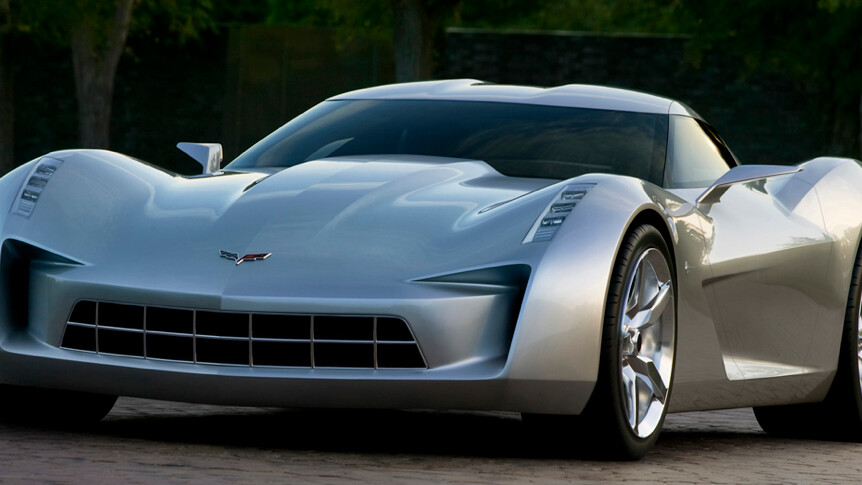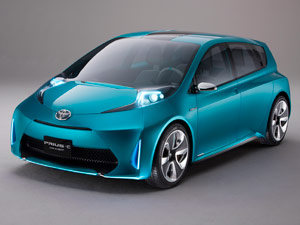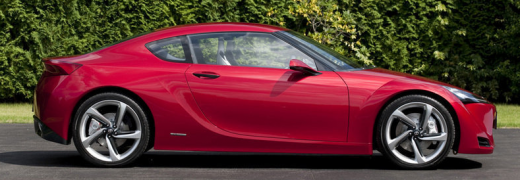
| This post was brought to you by Volvo. Learn more here. |
The bridge between economy and luxury in the automotive industry has always been a hot spot for the market. These go-between cars had some of the features from the higher end, but not enough to tip the price points. They were somewhat fuel efficient, but not to the point of being economy. But 2012 appears to be the year that the middle ground gets redefined.
A few weeks ago when I visited Detroit to talk with the folks from ShopAutoWeek, I was struck by the chasm that existed between the models of cars that we were given to drive. On one hand we had the family trucksters, such as the Honda Odyssey and Dodge Durango. On the other side we had the Fiat 500 and Chevy Cruze, two cars that care a lot about getting you from A to B with as little gas as possible.
But where is the middle ground? Interestingly, it’s still around, but it’s taking on a completely different look from what we’ve ever seen before.
First off I think that we have to look at what’s happening in the automotive industry as a whole. With the global economy being as it is, manufacturers are realizing that the “middle class” as it were isn’t quite so middle class any more. There are those who still have money, and there are cars in the market that cater to them. But for those of us with a bit more sense than cents, the offerings are requiring us to take a different approach to how we think of cars.
It used to be that cars with great gas milage focused almost solely on economy. But as times have changed drastically over the past couple of years we’re finding more options for cars that are not only getting great milage, but are also (gasp!) fun to drive. The automotive makers have come to terms with the fact that this is what the public wants, and the choices are getting more broad.
 For instance, we can expect to see Toyota’s venerable Prius get a redesign. Since its inception, it has carried the same, quasi-spaceship form. But with an increasingly-crowded market, Toyota has had to come to terms with the fact that buyers want not only great milage but a car that’s also stylish and fun to drive. The concept to the right was shown at this year’s North American Auto Show. Let’s hope that Toyota keeps at least some of the cues.
For instance, we can expect to see Toyota’s venerable Prius get a redesign. Since its inception, it has carried the same, quasi-spaceship form. But with an increasingly-crowded market, Toyota has had to come to terms with the fact that buyers want not only great milage but a car that’s also stylish and fun to drive. The concept to the right was shown at this year’s North American Auto Show. Let’s hope that Toyota keeps at least some of the cues.
But Toyota is far from alone. Chevrolet’s Volt has been the talk of the tech industry this year for its all-electric-then-gas approach. Chevy, however, has another offering on the market for those who can’t or won’t afford the added cash of the Volt. Its Cruze model is, essentially, the exact same car without the generator, and it’s expected to see highway economy in excess of 40 MPG for the 2012 or 2013 model. All the while, this “econobox” is still spirited, fun to drive and nicely appointed; a combination that we were unlikely to see even 5 years ago.
The meshing of features with lower price isn’t the only area in which we’re going to see convergence. Parent companies, and even those unrelated to one another, are joining forces to come up with products that are more than the sum of their parts. Popular Mechanics believes that this is the year that we’ll see a Maserati, based on the Jeep Grand Cherokee, but with a Ferrari-designed V8 engine, all due to the parent company of Fiat which owns both Chrysler and Maserati/Ferrari.
Another example? Toyota and Subaru have paired up for a car that will be the FT-86, sold under the Toyota (or perhaps Scion) badge. A reinvention of Toyota’s classic Celica line, the FT-86 is what can happen when two major manufacturers meet in the middle to reinvigorate a brand.
Need further proof that we’re meeting in the middle? Just take a look at what Ford is doing. The company, which had in previous years relegated its economy line to nothing more than no-featured, near-disposable boxes, has taken a completely different approach. Evidence of that stands in the introduction of the Fiesta to the US market.

The upcoming Fiesta is expected to get a 1.6-liter turbocharged 4-cylinder engine, sport-tuned suspension and it may even have an option for Recaro racing seats. While it’s not likely that we’ll see this for a 2012 model car, we could see it come out as a 2013 within the 2012 year.
What’s probably most interesting about everything that we’ve talked about here is where the cars are going with their technologies. Geek toys such as rain-sensing wipers, reverse cameras and automatic parallel parking systems were once only available on the highest end of cars. But as the demands of the consumers have changed, so too have the offerings of the makers.
At this year’s Detroit Auto Show, we saw many models that did away almost entirely with the stock radio and entertainment options, allowing instead for drivers to slide in, plug up their iPhone or Android device and have it be the centerpiece of listening and viewing. Headrest-mounted monitors, which until fairly recently were tied to an in-car system, are now displaying video from an iPhone connected to a dock in the dashboard without the necessity to have a system such as this installed by a third-party.
In short, if you’ve been waiting for a 40 mile-per-gallon car that was still fun to drive, offered a wealth of geekery and didn’t look a thing like what you’ve seen before, 2012 could be your year. At any rate, that’s the direction that the manufacturers are heading, so if you don’t see what you want this year, you can bet it won’t be long until you do.
Get the TNW newsletter
Get the most important tech news in your inbox each week.

